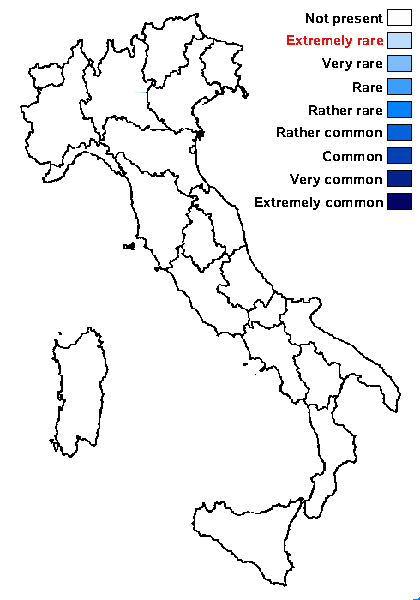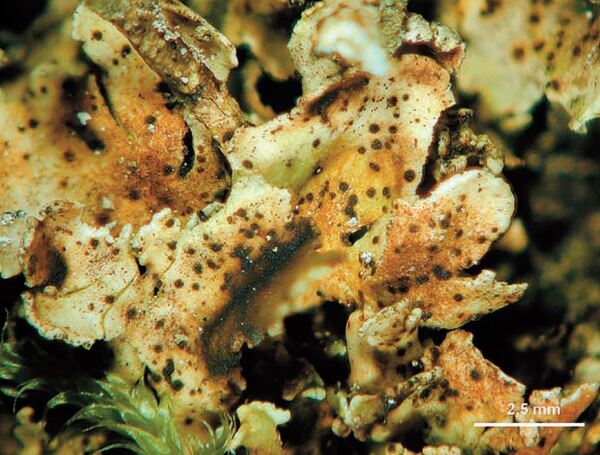Arthonia coniocraeae Brackel
Ber. deutsche bot. Ges., 80: 6, 2010.
Synonyms:
Distribution:
Description: Thallus inapparent, not lichenized, developing inside the squamules, rarely the podetia of Cladonia coniocraea. Apothecia arthonioid, emarginate, brown to dark brown, slightly convex, single or in loose groups, more or less round, 0.15-0.25 mm across, partly covered by a necrotic layer of the host thallus. Proper exciple not developed; epithecium brown, scarcely delimited from the hymenium; hymenium speckled pale brown to brown, 60-80 µm high, K+ dirty violet then grey, I+ and K/I+ dark red; paraphysoids branched and anastomosing, c. 2 µm thick, the apical cells brown-capped; hypothecium poorly delimited from the hymenium, colourless to pale brown. Asci (2-)4-8-spored, subglobose to ovoid, semi-fissitunicate, with a large apical dome, and a distinct ocular chamber, Arthonia-type, 25-45 x 14-15(-19) µm. Ascospores 1(-2)-septate, at first hyaline but soon turning brown, finely verrucose, one of the apical cells wider and longer than the others, 12-15 x 4-6 µm. Photobiont absent. Spot tests: thallus K-, C-, KC-, P-. Chemistry: without lichen substances.Note: a recently-described lichenicolous fungus growing on the thalli of Cladonia coniocraea; never reported from Italy, but to be looked for there.
Growth form: Lichenicolous fungus
Substrata: bark, lignum, soil, terricolous mosses, and plant debris
Reproductive strategy: mainly sexual
paras Cladonia coniocraea

Predictive model
Growth form: Lichenicolous fungus
Substrata: bark, lignum, soil, terricolous mosses, and plant debris
Reproductive strategy: mainly sexual
paras Cladonia coniocraea

Predictive model
 INDEX FUNGORUM
INDEX FUNGORUM
 GBIF
GBIF


